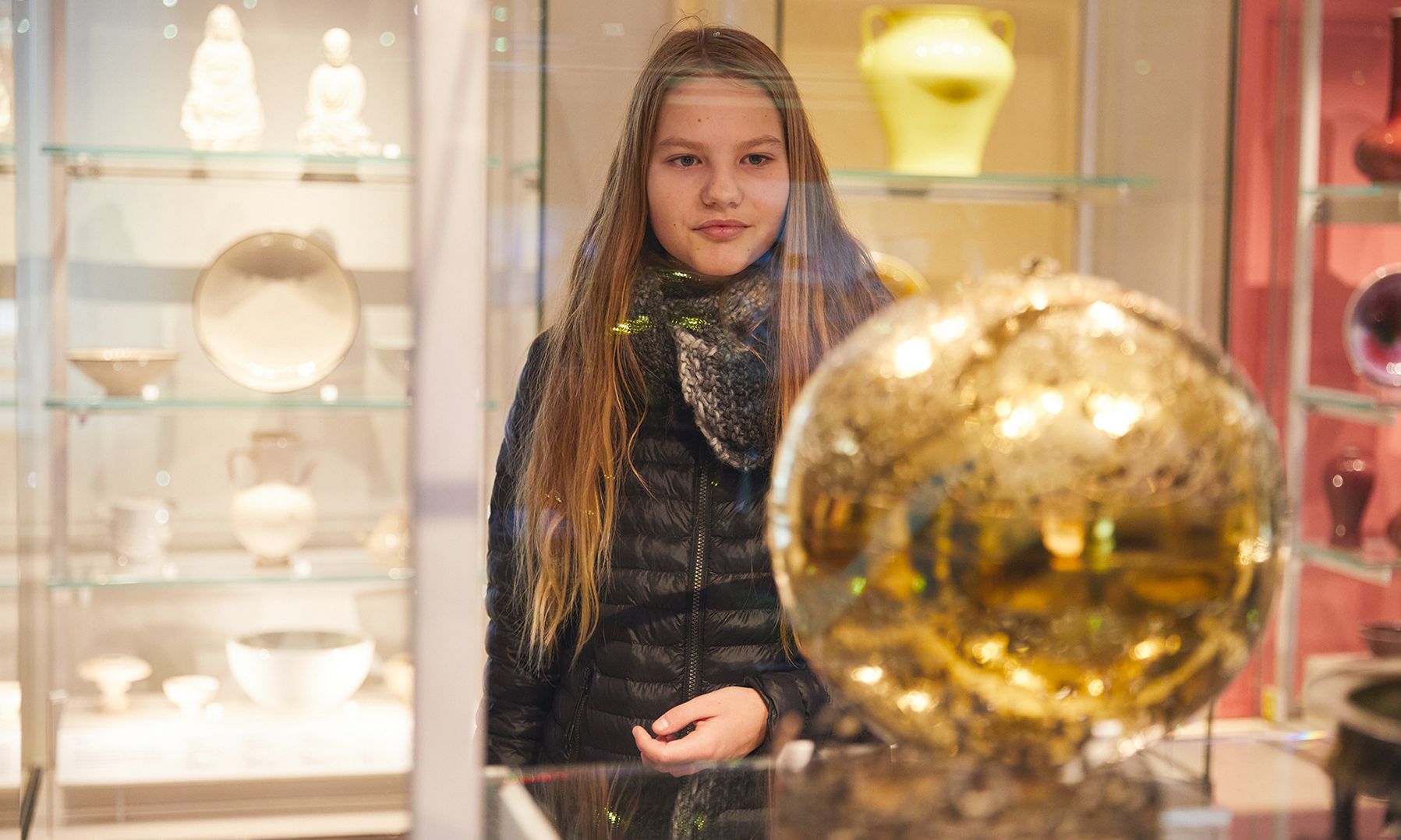Sir William Burrell’s collection includes more than 9,000 objects, including the brass incense burner (above) from the Dutch East Indies © Janie Airey, Art Fund 2023
• Read about the museums shortlisted for the Art Fund Museum of the Year 2023 here
She’s one of the first things you see as you arrive in to the Burrell’s airy, light-filled space: Mary Magdalene, head to one side, eyes looking down. She’s shaped from stone that is either limestone or terracotta, dates from around 1500 and was probably made in Florence. But that’s by the by, because the label next to her isn’t about Renaissance craftswork or the Italian art world or how this piece connects to the canon. “How,” the visitor is asked, “do you think she’s feeling?”
This is emblematic of the reimagined Burrell, which has been a stalwart of Glasgow’s cultural offering since the 1980s. But for many Glaswegians, the Burrell tended to symbolise high art: high falutin’, hard-to-penetrate “learned” art. The kind of art that was for people who knew about art history. All that changed when it reopened in 2022 after a six-year refurbishment. Sir William Burrell’s collection, drawing heavily as it does on Renaissance altarpieces, tapestries and oriental ceramics, has been reinterpreted for all-comers, and skewed in parts to particular communities, the kind of populations that an art gallery like this might find it difficult to connect with. So, the label asks: how does this Mary make you feel? Because no-one needs any knowledge of art history or specialist training to answer that question.
© Janie Airey, Art Fund 2023
I visited the Burrell a few days before it reopened: the scaffolding was still up and not all of the objects were in place. There was plenty of nervousness: the project cost £68.25m and some people thought it was wrong to concentrate so much of the city’s arts budget on a rarefied, out-of-town offering – the Burrell is set in leafy Pollok Country Park, seven miles down the M8 and M77 motorways from Glasgow Central. And then there was the new approach. Would the curators be accused of “dumbing down”?
Fifteen months on, there is a distinctly more relaxed feel. The reviews were enthusiastic and the ambition of getting 400,000-plus people through the doors has been more than met, with the figure tipping over 600,000 for the first 12 months. Better still, the feedback from visitors has been overwhelmingly positive: 97% of those polled thought it was good or very good. Duncan Dornan, the head of museums and collections for the charity Glasgow Life, says the response has been the biggest surprise since the reopening. “We were trying to create new routes into the collection, and that could be controversial,” he says.
The new Burrell’s success, he thinks, is down to the extent and thoroughness of the consultation with local communities. “We aimed to identify connections and links, and tell people things that gave them a new way into engaging with the collection,” he says. So curators worked with the local Iranian community on developing the interpretation of objects from Persia and with the LGBTQ+ community on the porcelain figure of Guanyin, which the museum has labelled as trans, saying that this Buddhist goddess “has always represented the basic human values of compassion and kindness”.
Shipbuilder Sir William Burrell’s collection includes more than 9,000 objects, although many have been added since he gifted it to Glasgow in 1944, stipulating that it must be housed in a rural setting – and indeed, it is fair to say that the surrounding countryside has always been part of the show, illuminating some of the stained glass and providing lush backdrops to the galleries. Samuel Gallacher, keeper and museum manager of the Burrell Collection, says inclusion is always at the top of the curatorial agenda, with galleries curated along universal themes such as love and friendship, death and mourning, and colour.
The digital offering at the Burrell is instinctive and pleasing: actors play Burrell, his wife Constance, their maid and butler. The debt to them is acknowledged in a recreation of one of the rooms at their home Hutton Castle, but that has been downsized from three in the old Burrell; this is about democratisation of the collection, while not losing sight of the original collectors or their privilege. Paintings of brightly coloured flowers and vases, including by Scottish Colourist S. J. Peploe, are shown against a wall cascading with projected images of flowers – I watched a toddler having great fun trying to catch one. There is a whole raft of events aimed at bringing the community in for everything from drawing classes and masterclasses on weaving and tapestries to weekly deep-dive talks into individual objects called “Burrell Bites”, delivered by many different members of staff. This is a museum where the security staff are as likely as the curators to chat about the works. “There are no preconceptions here about how we ‘should’ be doing things,” says Gallacher.
© The Burrell Collection
Samuel Gallacher: Our school-in-residence programme involves a class of 11-year-olds spending their entire week at the museum, using the collection as the basis for the curriculum. They have lessons as normal, but their science classes, for example, might be in the woods that surround the museum, and if they’re talking about the Olympic Games they might go to look at the tapestry showing the Games being founded by Hercules. At the end of the week there’s an assembly that brings everything together and you get a real sense of their passion and ownership. One of the children came up to me and asked: “Are you the owner of the museum?” And I said, “No, you’re the owner.” Because that’s the truth, and that’s what we want our young people to go away understanding.

